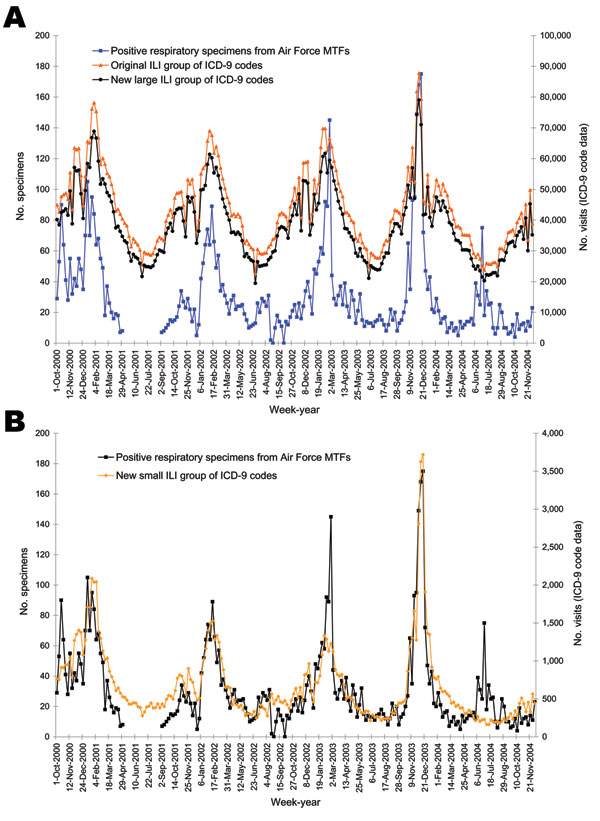Volume 13, Number 2—February 2007
Research
Code-based Syndromic Surveillance for Influenzalike Illness by International Classification of Diseases, Ninth Revision
Figure 2

Figure 2. Weekly trends among unmatched visits coded by International Classification of Diseases, Ninth Revision (ICD-9), and specimens positive for any viral respiratory pathogen from October 2000 to December 2004. Based on correlation to positive cultures and signal-to-noise ratios, new large and small influenzalike illness (ILI) categories were created. The number of positive specimens is depicted on the left y-axis and compared to the number of visits for the original, new large and new small ILI ICD-9 categories, as shown in the right y-axis. A) Original ILI and new ILI-large groups with positive specimens; B) new ILI-small group with positive specimens. MTFs, military treatment facilities; CI, confidence interval.
1Current affiliation: Tacoma–Pierce County Health Department, Tacoma, Washington, USA
2Current affiliation: US Census Bureau, Suitland, Maryland, USA
3Current affiliation: Uniformed Services University of the Health Sciences, Bethesda, Maryland, USA